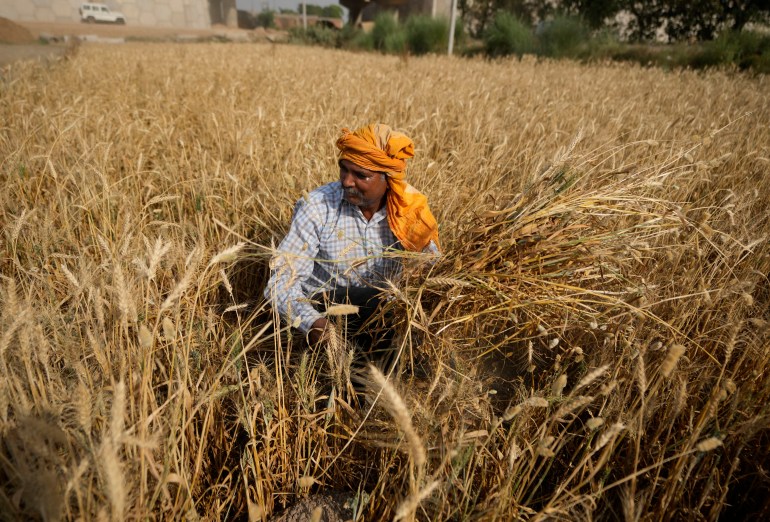Untimely rains and hailstorms could damage India’s key winter-sown crops, such as wheat, rapeseed and chickpeas, just before harvesting begins for plants that have already suffered some heat stress, industry and weather department officials say.
India’s weather department has warned key growing states in central, northern, and western regions could receive more rain and hailstorms in the next 10 days. That could curtail production and lift food inflation, which the government and central bank have been trying to contain.
A drop in wheat production could make it difficult for New Delhi to replenish inventories, while lower rapeseed output could force the world’s biggest edible oils buyer to increase imports of palm oil, soya oil and sunflower oil.
“Rainfall and hailstorms are raising concerns since harvesting of winter crops just started. The standing crops would be affected, and it could reduce the output,” said Harish Galipelli, director at ILA Commodities India Pvt Ltd.
Farmers usually start planting wheat, rapeseed and chickpeas in October and November, and harvest them from the end of February.
Hailstorms and gusts of more than 30kmph (19mph) winds could hit states such as Rajasthan, Madhya Pradesh, Uttar Pradesh, Punjab, Haryana and Maharashtra in the next few days, the India Meteorological Department (IMD) said.

Winter-sown crops have already been under stress because of above-normal temperatures and maturing early, said farmer Ramrai Bohara from Rajasthan, the biggest rapeseed producing state.
The maximum temperature in some wheat growing areas jumped above 39 degrees Celsius (102 degrees Fahrenheit) earlier this month, nearly 7C (12.6F) above normal, according to IMD data.
“We don’t want rainfall and windy weather for two-three weeks. Crops would fall and harvesting will become difficult,” Bohara said.
Rainfall would not only reduce yields but could also reduce the quality of the harvest, said a Mumbai-based dealer with a global trading house.
El Nino threat
Cereal and oilseed crops across Asia are forecast to face hot, dry weather, with meteorologists expecting the El Nino weather pattern to develop in the second half of the year, threatening supplies and heightening concerns over food inflation.
Vast swaths of farmland in Southeast Asia and Australia are expected to face higher temperatures, while some growing regions in North and South America are likely to see more crop-friendly weather as there is more than a 50 percent chance of the El Nino phenomenon occurring, meteorologists said.
La Nina weather, characterised by unusually cold temperatures in the equatorial Pacific Ocean, has ended and El Nino, a warming of ocean surface temperatures in the Eastern and Central Pacific, is expected to form during the northern summer, according to US and Japanese weather forecasters.
While La Nina brings cool and wet weather to parts of Asia, El Nino is typically associated with heat and dryness in the region. In North and South America, the weather tends to be favourable for crops during El Nino, although there are likely to still be pockets of adverse weather lingering.
The northern and central parts of India, which are already reporting a lack of moisture, are set for below-normal rains in the second half of the year, meteorologists said, leaving the world’s second most-populous nation vulnerable to lower food output and higher prices.
“In central and northern parts of India, stretching right up to Pakistan, the issue is that the current conditions are opposite to that of Southeast Asia,” said Chris Hyde, a meteorologist at the US-based Maxar.
“The region is facing drought, so even slightly below normal precipitation is likely to pose risk to crops.”

